This course is a part of the Higashiyama Course of the Kyoto Trail.
Starting from the Shinnyodo-mae bus stop, we will visit Anrakuji Temple. The trail climbs along the valley, passes the waterfall at Roumon, climbs Mt. Daimonji, and descends to Himukai Daijingu Shrine. The nearest station to the crossroads is Keage Station on the Tozai Subway Line. Note that this route goes to the top of Daimonji Mountain, but does not include the site of Daimonji Yaki (burning of Daimonji characters).
Itinerary of this course
Get off at the Shinnyodo-mae bus stop on Shirakawa Dori. Although it is called “Shinnyodo-mae,” it is a bit far from Shinnyo-do (Shinsho-Gyokuraku-ji Temple).
Anrakuji Temple
First, we will stop at Anrakuji Temple.
Anrakuji Temple is a temple of the Jodo sect of Buddhism and is called Sumirenzan Anrakuji Temple. In the Kamakura period (1185-1333), two of Honen’s disciples, Sumiren and Anraku, built a hermitage as a place to practice Nembutsu (the recitation of the Lotus Sutra).
Anrakuji Temple is open to the public only in spring and fall. (Check the schedule here)。
Anrakuji Temple has a sad origin. Here is a quote from the Anraku-ji Temple website. You can hear this story from the attendant at Anrakuji Temple (but in Japanese only).
Princess Matsumushi and Princess Suzumushi, courtesans of the Emperor Go-Toba, were impressed by the teachings of Honen Shonin and Juren and Anraku Shonin, and eventually came to wish to enter the Buddhist school. In December 1206, while Emperor Go-Toba was away on a pilgrimage to Kumano in Kishu, Princess Suzumushi secretly left the Kyoto Imperial Palace in the middle of the night to visit the “Shikagatani Hermitage” to shave her hair and ask for ordination. At first, high priests did not approve of their ordination, but they were impressed by princess’s poem.
http://anrakuji-kyoto.com/anrakuji.html
When the emperor learned of this, he was furious and attempted to suppress the priests who preached the Nembutsu teaching. The following year, Juryo Shonin was beheaded in Mabuchi, Omi Province (present-day Omihachiman City, Shiga Prefecture), and on the same day, Anraku Shonin was beheaded in Rokujokawara, Kyoto (near Higashi Honganji Temple). The persecution did not stop there; Honen Shonin was exiled to Sanuki Province (Takamatsu City, Kagawa Prefecture) and Shinran Shonin to Echigo Province (Joetsu City, Niigata Prefecture). This was the so-called “Ken’ei (Jogen) Incident”.
After that, both princesses spent the rest of their lives in Buddhist meditation at Komyo-bo on Ikuchi Island in the Seto Inland Sea.
Emperor Go-Toba himself was defeated by the Kamakura Shogunate in the Jokyu Rebellion of 1221 and exiled to Oki Island. He was a man of many talents, including the compilation of the Shinkokin waka anthology, but he was apparently a man of great vigor.
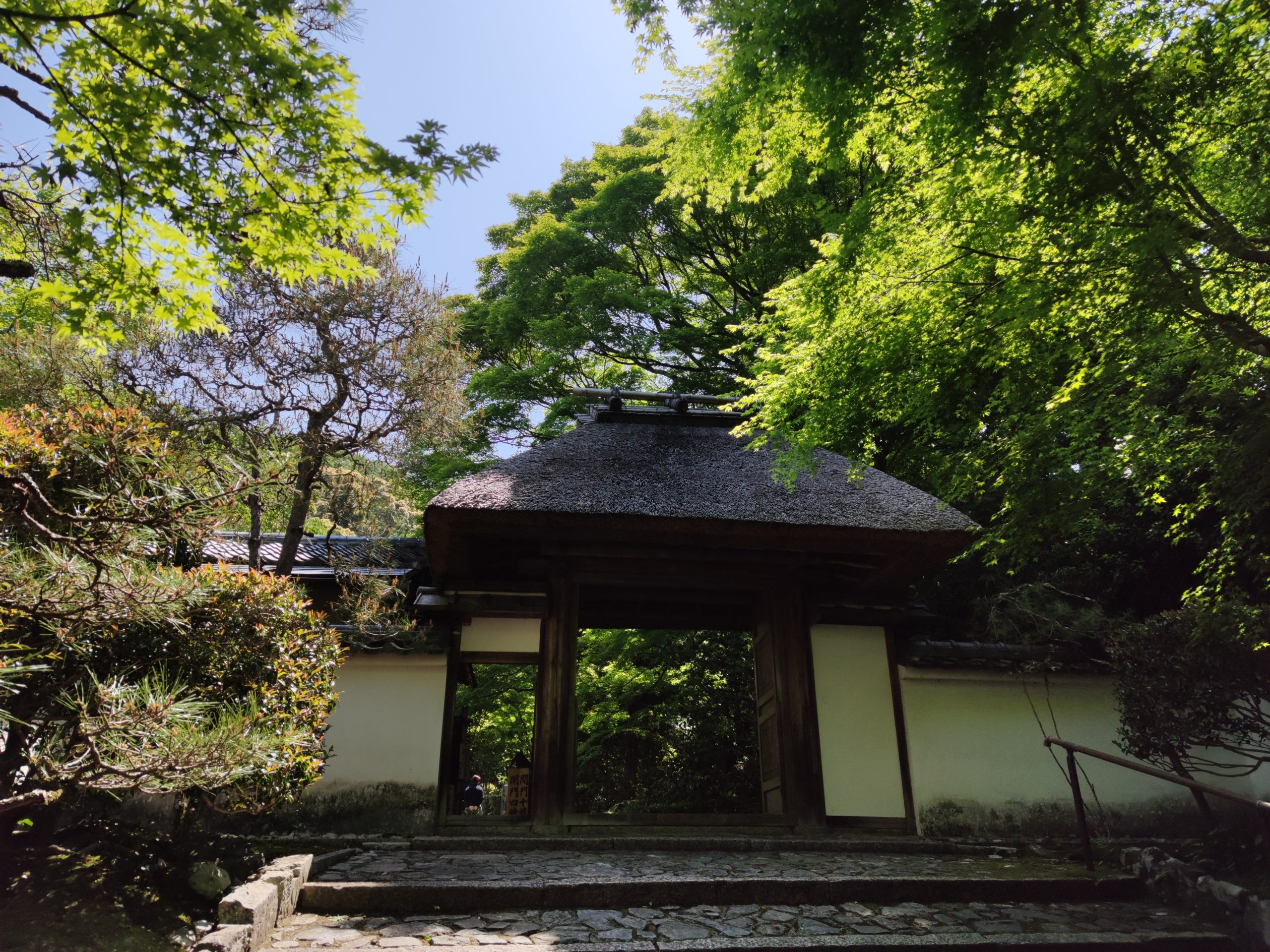

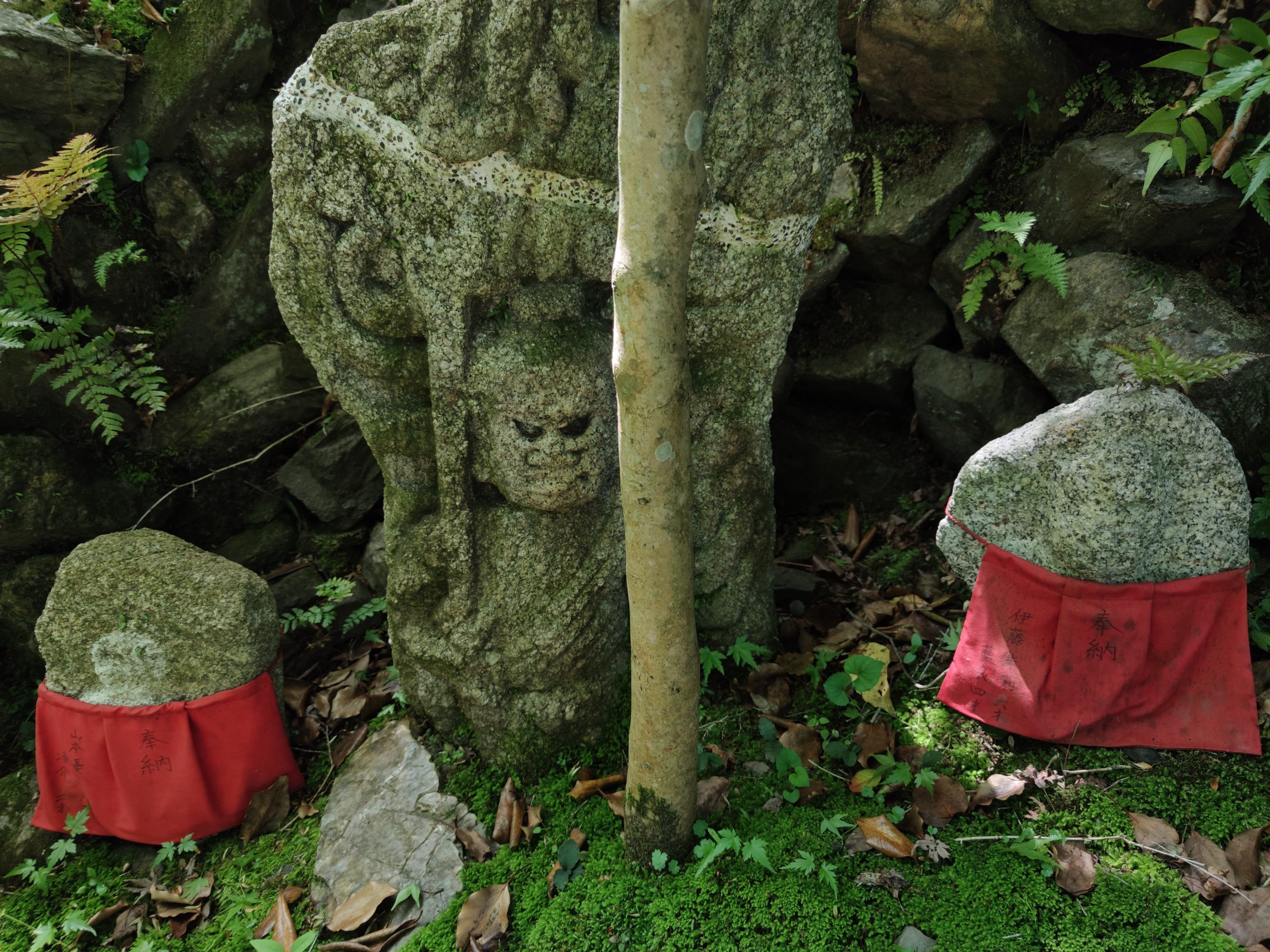
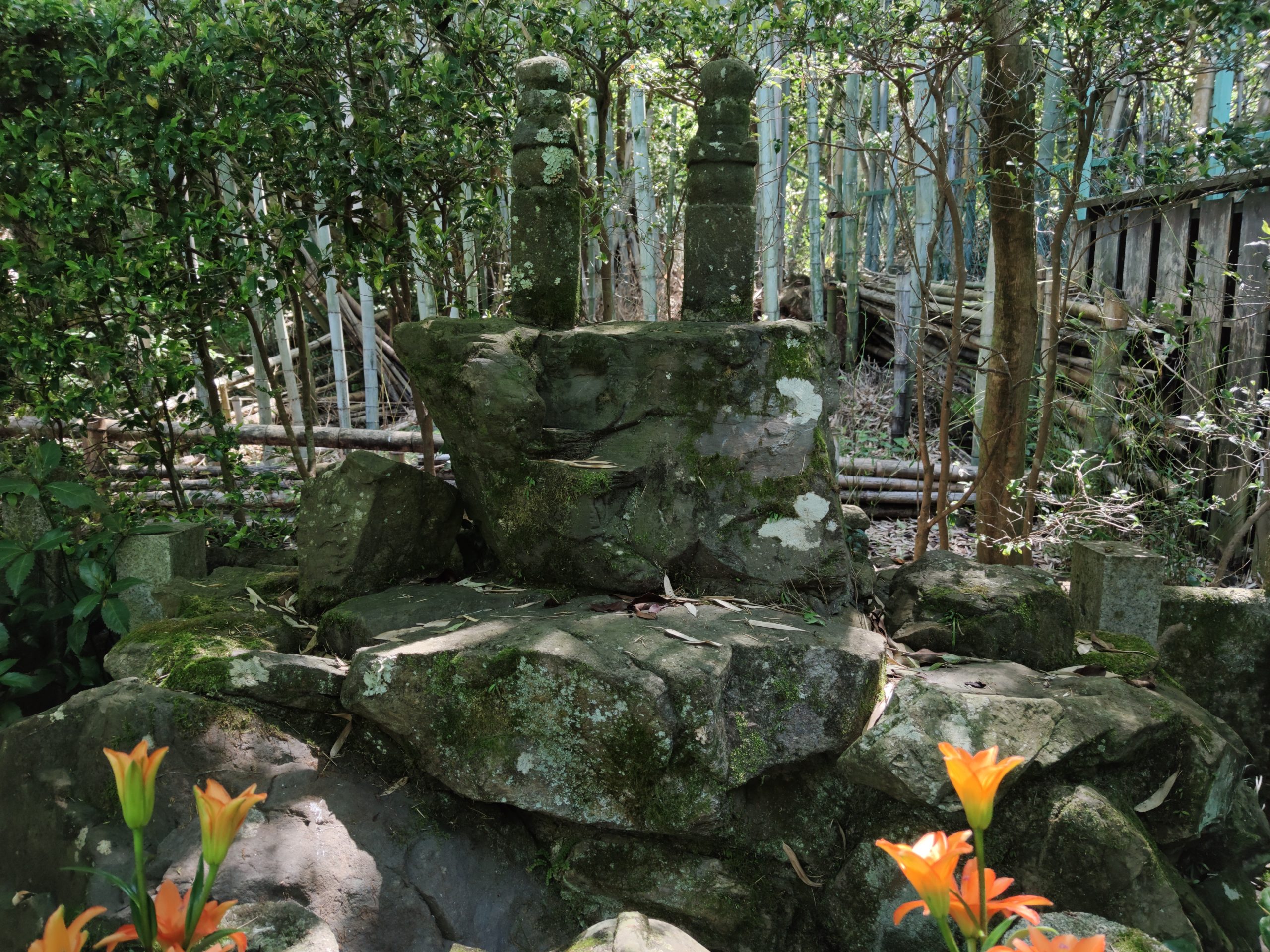
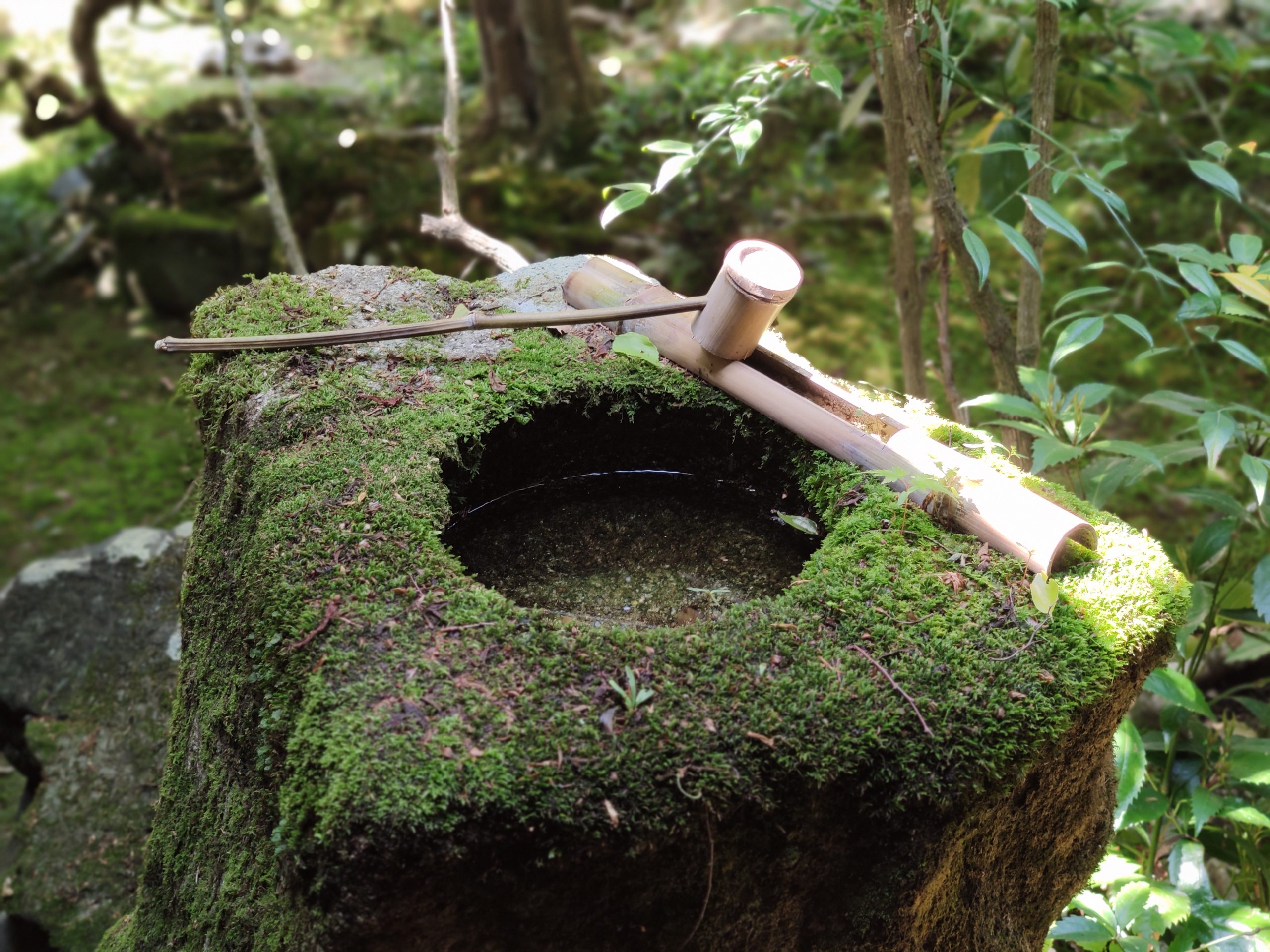
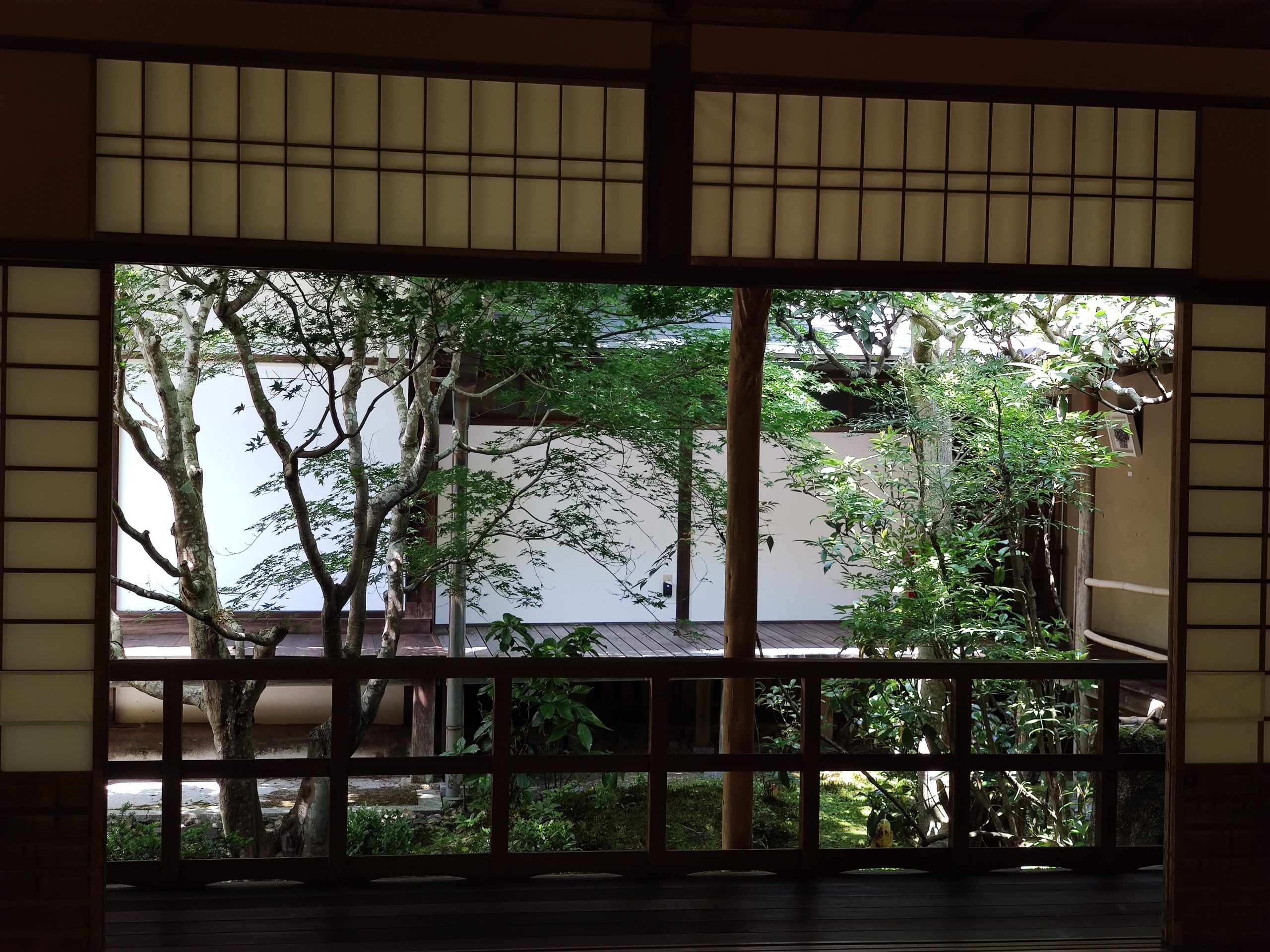
From Anrakuji Temple, return to the road a little and take the road from in front of the gate of Reikanji Temple (rarely open to the public) in the east direction toward the mountain.
The road is a driveway for a while, but eventually you will follow the signposts to the mountain path. In some places, stone walls remain in the mountains, suggesting that buildings were once erected here and there. This route is “Nyoi Kodo (Nyoi old route)”, and was once the shortest road connecting Kyoto and Omi.
Roumon Waterfall
Eventually, we came to the Roumon-no-taki waterfall. It is said that the waterfall is called “Roumon-no-taki” because the gate (romon) of Nyoiji Temple used to here. The waterfall was smaller than expected.
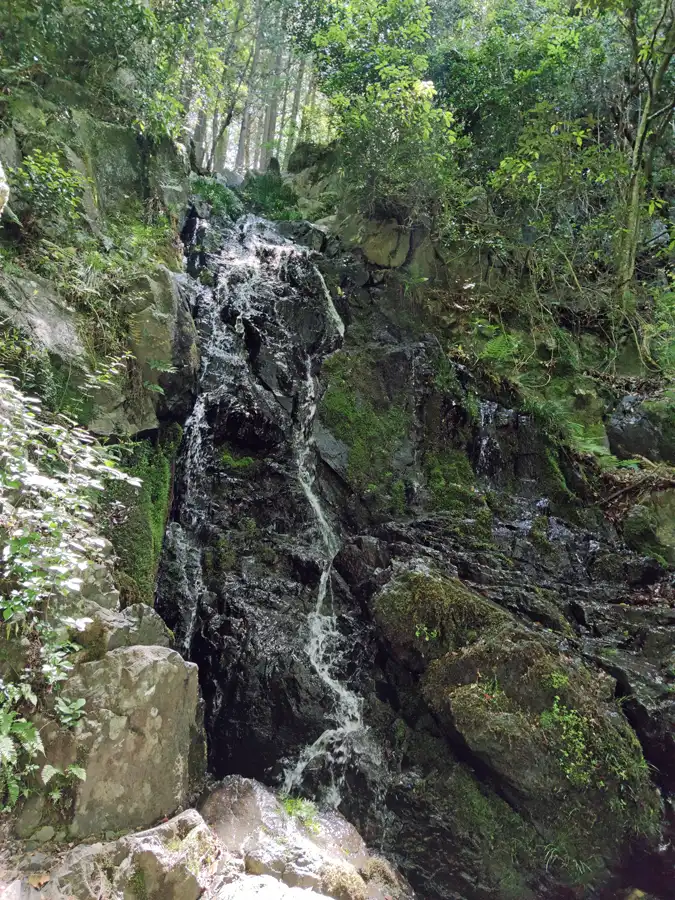
There are stone steps beside the waterfall, and as I climbed up thinking, “Obviously there was something around here,” I found a stone monument in a grove of trees. It reads, “Monument of Monk Shunkan’s Loyalty”. In the late Heian period, Shunkan’s Shikagaya Villa was located here. In 1177, Shunkan offered the villa to the priest Saiko Hoshi, Fujiwara no Naruchika, Naritsune and his son, Taira no Yasuyori, and others to conspire to overthrow the Heike clan. The plot was discovered by a tip-off, and Toshihiro was exiled to Kikaigashima Island, where he spent the rest of his life.

Daimonji Mountain
Continuing up along the valley, we reached a ridge. Is this the Nyoi Crossing? Along the ridge, there is an obvious earthwork. There used to be a castle called Nyoigatake Castle on the summit of Daimonji Mountain.
Nyoigatake Castle is said to have been built by Takatada Taga of the Eastern Army during the Onin War. After that, it seems to have been used as a strategic point to hold Nyoigatake until the Warring States Period. There are remains of earthen mounds, moat cuttings, the remains of a fort, and earthen bridges all the way up to the summit of Daimonji Mountain. There are no information boards about the ruins of the castle, so most people do not seem to notice them.
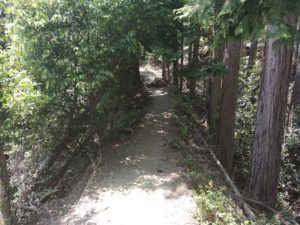
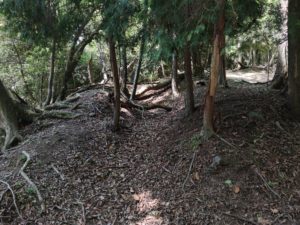
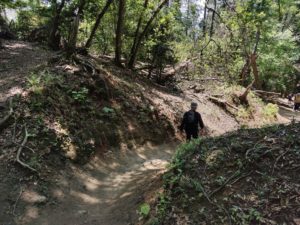
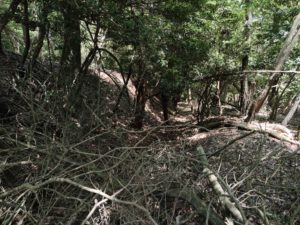
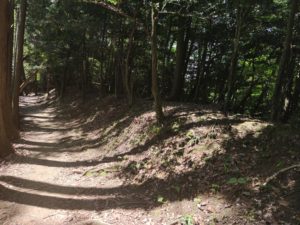
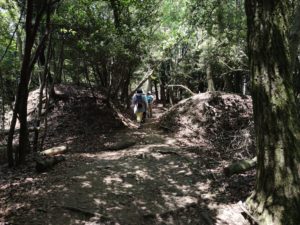
From the summit of Mt. Daimonji, a panoramic view of the city of Kyoto can be seen.

Himukai Daijingu Shrine
From Mt. Daimonji, return to the trail you came up and continue on to the ridge further ahead from Nyoi Crossing. From here, although there are some ups and downs, the trail continues generally downhill toward Himukai Daijingu Shrine. The route splits into two, but we headed toward Amano-Iwato. Amano-Iwato is a small cave dug into the surface of the mountain, but since Amaterasu is enshrined at the Himukai Daijingu Shrine, perhaps it is related to this cave.
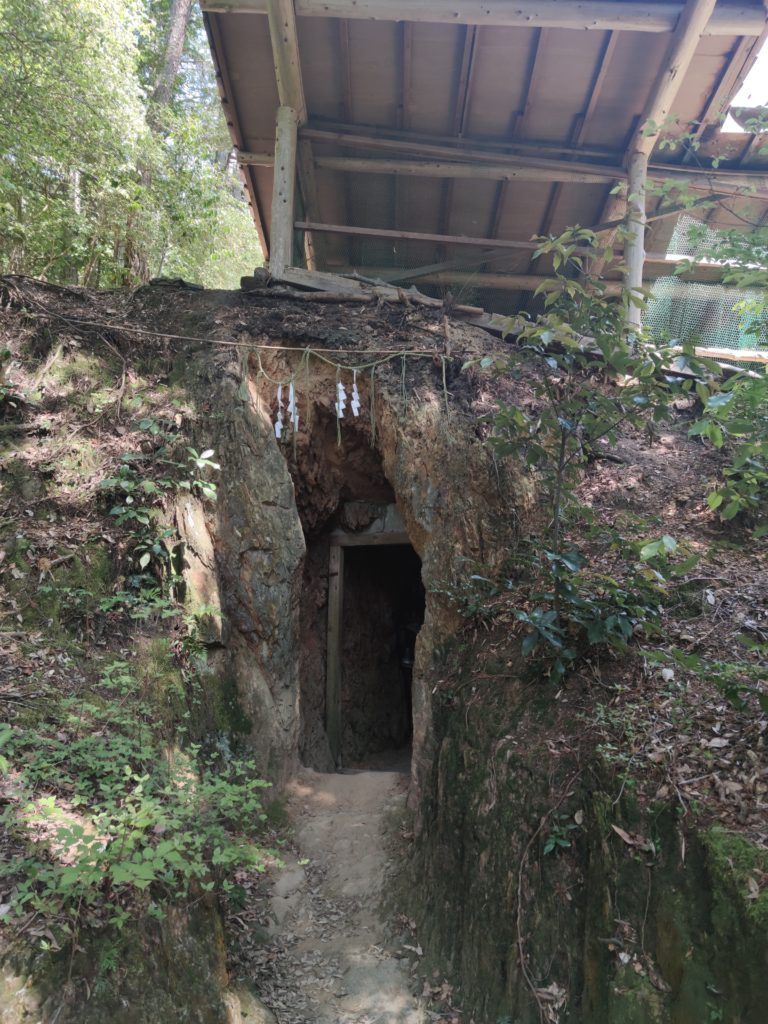
Himukai Daijingu official WEB site。
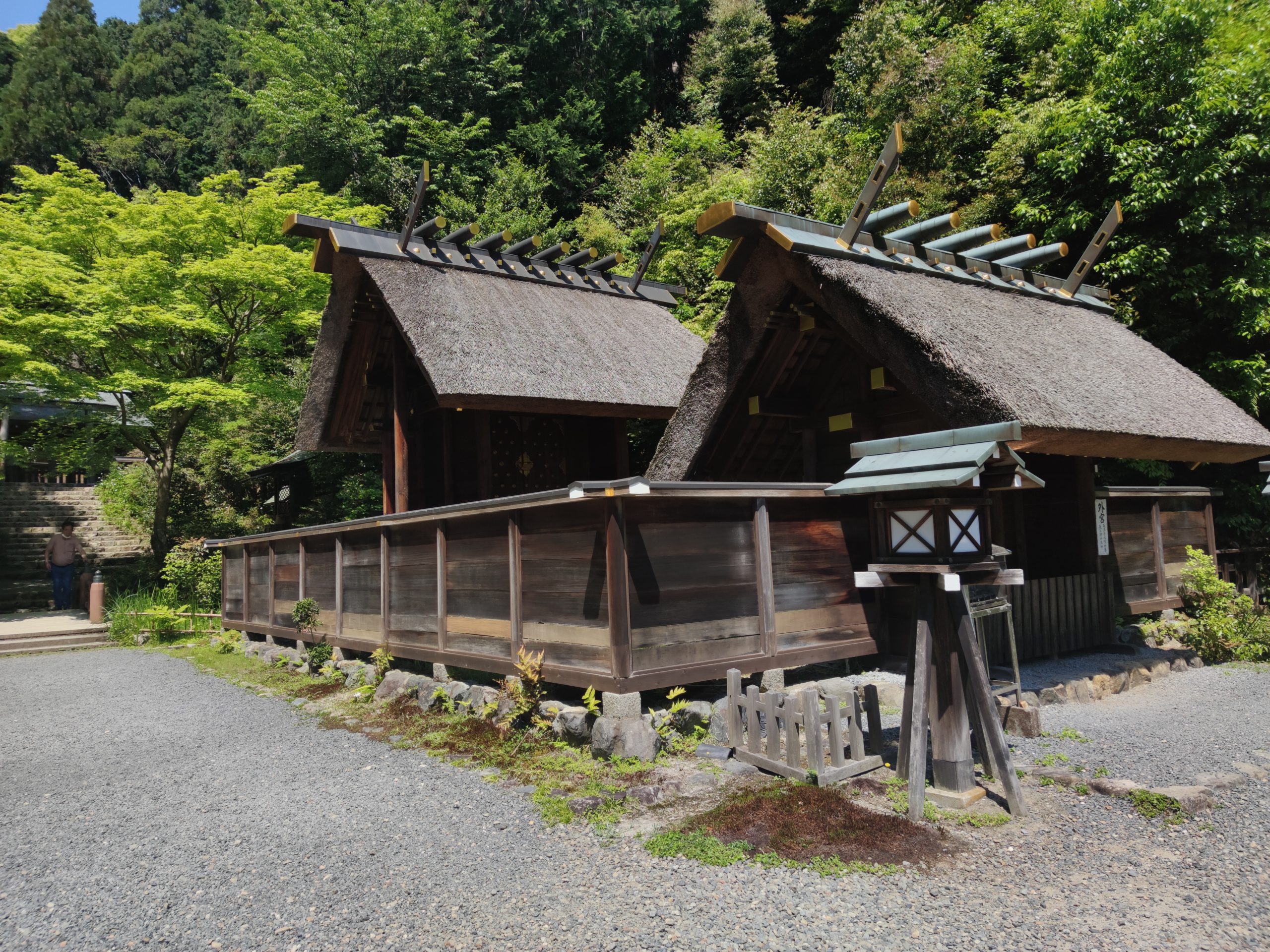
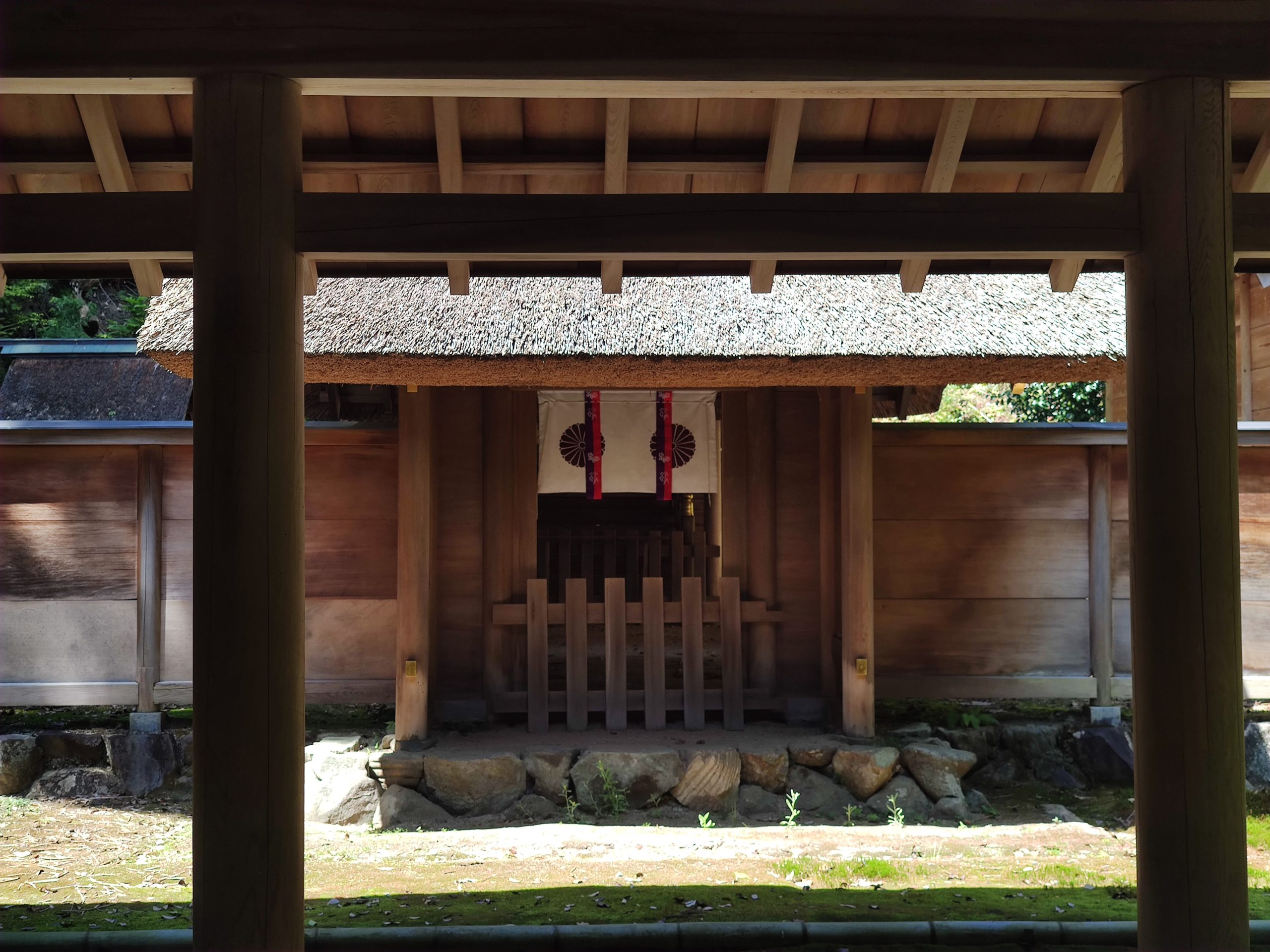
Going down from the Himukai Daijingu Shrine, you will come to the Lake Biwa hydrophobic facility.
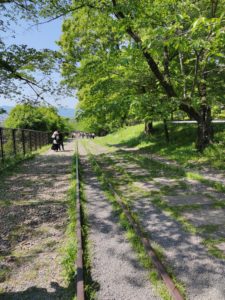
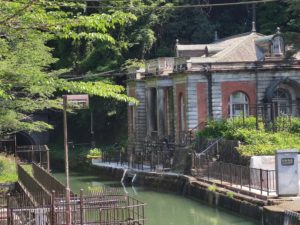
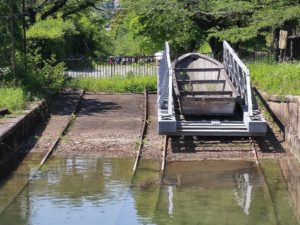
Yoshitsune Jizo
The Yoshitsune Jizo is located in a corner of the Lake Biwa waterway incline. In a legend, Ushiwakamaru (Minamoto no Yoshitsune), who was on his way to Oshu in the late Heian period. He was angered by a party of Sekigahara Yoichi, a member of the Heike clan. Then Yoshitsune cut down him along with his followers. The name of the place, Keage (kicked), originated here. The Jizo statue is said to have been dedicated by the local people who felt pity for Yoichi and his followers. It is hard to believe that Ushiwakamaru would cause such a commotion, but that is the story. Incidentally, Sekigahara Yoichi was a man who even built the Yoichi Palace for his contribution to water utilization in the Sekigahara area.
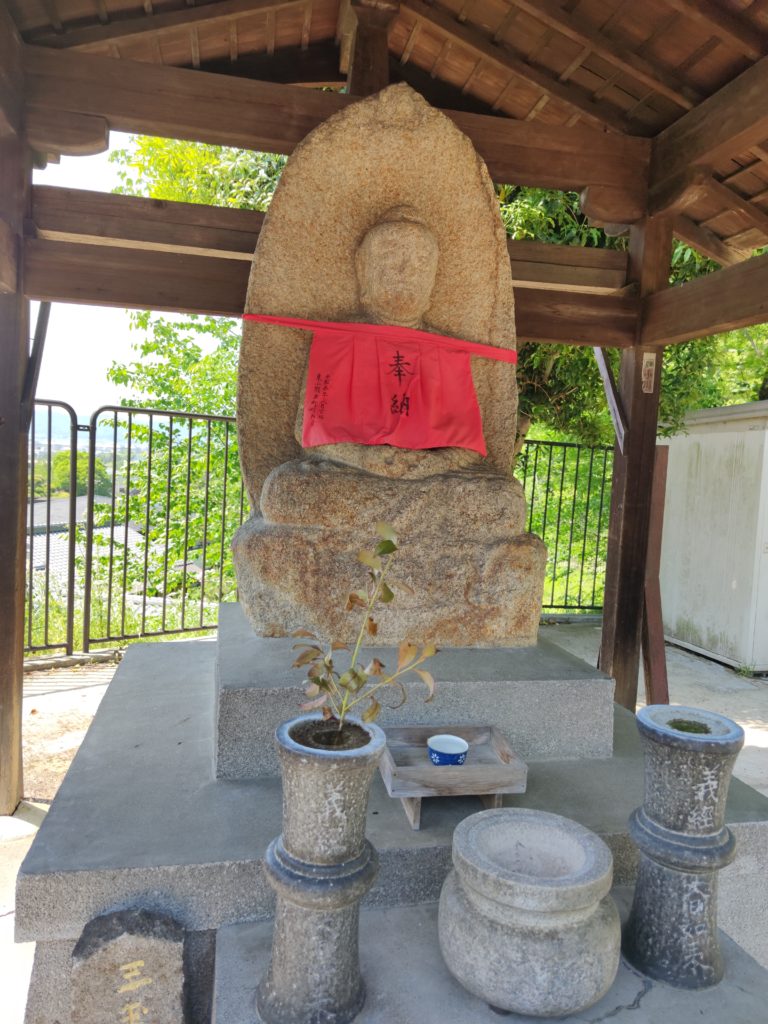
Check for the tour in Sekigahara
From Yoshitsune Jizo, head for Keage Station on the Tozai Subway Line to reach the goal.
Lunch
Bring your own lunch. If you go up early in the morning, you can come down for lunch.
What to bring and wear
Most of the route is on mountain paths and involves mountain climbing, albeit light. You should wear hiking shoes or light hiking shoes. (We do not recommend that you wear the same clothes you wear when walking in town.)
There are no stores or vending machines along the way, so be sure to bring tea or other liquids.
Related articles:
[…] English version of course guide is here. […]
[…] If you love hiking, then take a course of the Kyoto Trail. […]
[…] Incidentally, the story goes that Sekigahara Yoichi was cut down and killed by Ushiwakamaru (later Minamoto no Yoshitsune) in Kyoto in 1174. Tour to visit the place where Yoichi was killed. […]
[…] A hiking course of the Higashiyama Course of the Kyoto Trail visit the shrine. […]